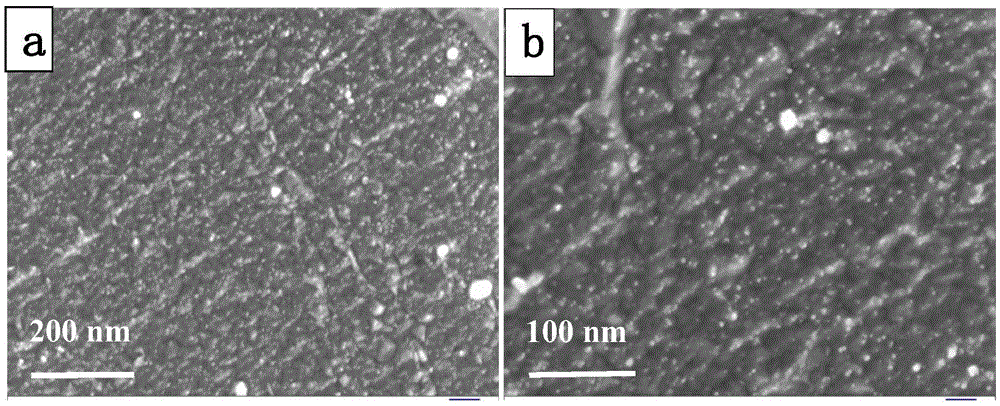A method for preparing in-situ nanoparticle-strengthened q195 steel
A nano-particle and nano-titanium oxide technology, applied in the field of iron and steel materials, can solve the problems of resource consumption of precious alloys, increased investment in process equipment, poor welding performance of steel types, etc.
- Summary
- Abstract
- Description
- Claims
- Application Information
AI Technical Summary
Problems solved by technology
Method used
Image
Examples
Embodiment Construction
[0022] 1) Alloy raw material: used is plain carbon steel Q195 billet, C: 0.10wt.%, Mn: 0.40wt.%, Si: 0.15~0.30wt.%, S: 0.045wt.%, P: 0.0350wt. %. Alloy weight is 8kg.
[0023] 2) Metal mold casting with internal ceramic coating is adopted, and the metal mold is heated to 200°C before pouring;
[0024] 3) In order to reduce air inhalation, heat the alloy raw material and graphite sprue cup to 200°C in a resistance furnace, keep it warm for 2 hours and dry it;
[0025] 4) Put the alloy raw material into the crucible, and install the mold on the centrifugal disc in the vacuum furnace. Then install the sprue cup bracket, sprue cup and ceramic filter. Align the nozzle of the sprue cup with the center of the gate on the mold. Close the furnace door and furnace cover, open the vacuum system to evacuate the furnace body, when the vacuum degree reaches 5×10 -1 Pa, turn off the vacuum system and fill with N 2 Gas up to 0.5MPa;
[0026] 5) The alloy is smelted by power transmissio...
PUM
| Property | Measurement | Unit |
|---|---|---|
| diameter | aaaaa | aaaaa |
| yield strength | aaaaa | aaaaa |
| yield strength | aaaaa | aaaaa |
Abstract
Description
Claims
Application Information
 Login to View More
Login to View More - R&D
- Intellectual Property
- Life Sciences
- Materials
- Tech Scout
- Unparalleled Data Quality
- Higher Quality Content
- 60% Fewer Hallucinations
Browse by: Latest US Patents, China's latest patents, Technical Efficacy Thesaurus, Application Domain, Technology Topic, Popular Technical Reports.
© 2025 PatSnap. All rights reserved.Legal|Privacy policy|Modern Slavery Act Transparency Statement|Sitemap|About US| Contact US: help@patsnap.com



